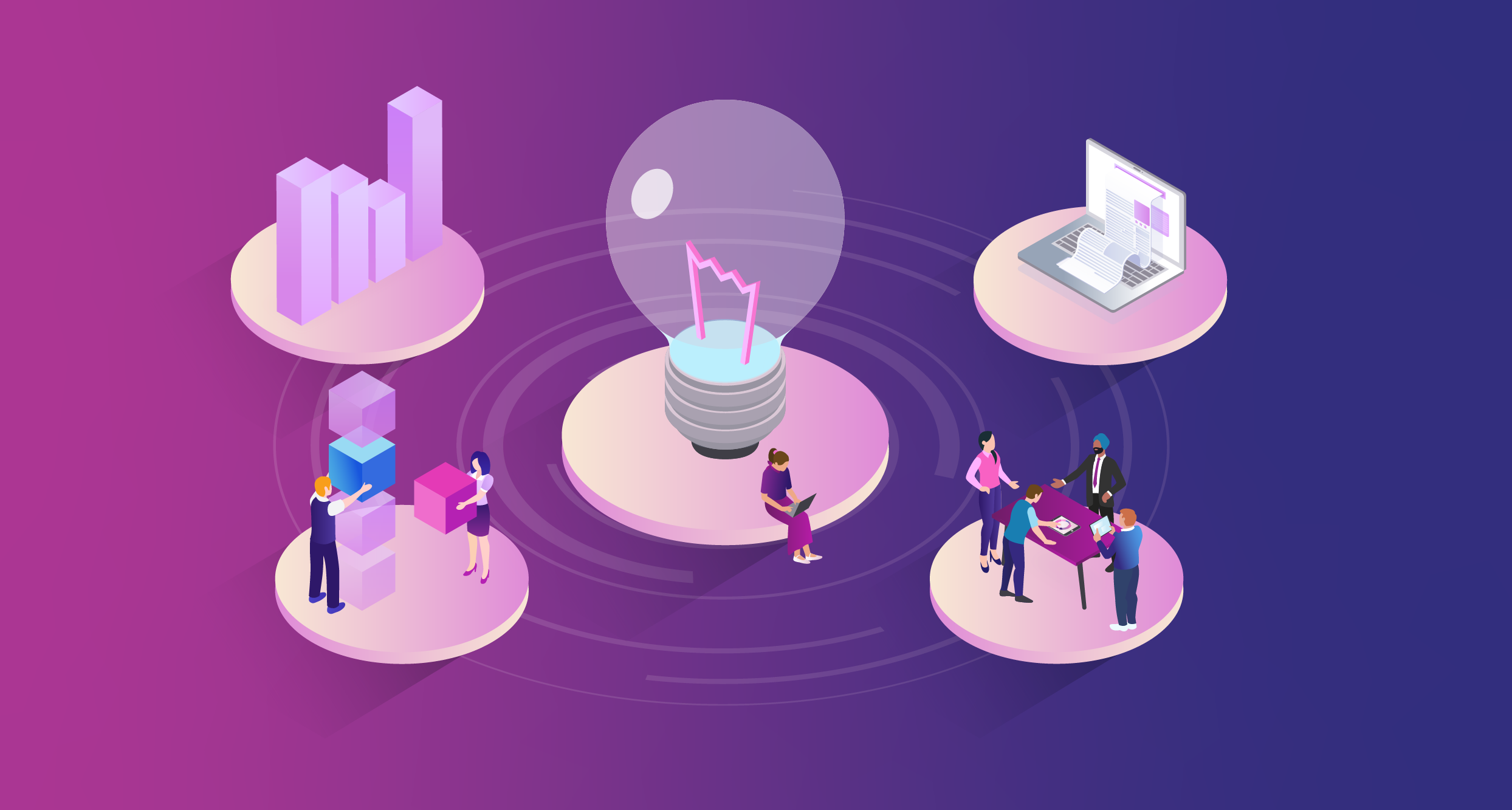Positioning Your Company for Success with Generative and Agentic AI Breakthroughs

Technology advancements are constantly evolving, and organizations that fail to act will be left behind. Over the past few years, there has been significant growth in AI capabilities and abilities, including generative AI and the emergence of agentic AI. Technology leaders need to proactively prepare to harness the power of these advancements to seize opportunities for growth and mitigate risk.
Leaders must balance careful planning with the need for quick, decisive action to keep up with the rapid pace of change and innovation. Many organizations are investigating generative AI, but only a handful have moved beyond the exploration phase to implementation. To remain competitive, companies must transform their tools and methodologies. Embracing innovation is vital for business survival, as neglecting to innovate can lead to stagnation.
To succeed, companies of any size need strong leaders to champion strategic, organizational, process, and cultural transformations to ensure organizational adoption of these breakthrough technologies. Based on our observations of leading global brands, those that adopt these changes and adhere to recommended best practices are well-positioned to capitalize on the opportunities presented by the next technological wave.
Looking Ahead: From Generative to Agentic
The emergence of Agentic AI capabilities marks the next frontier in AI-driven transformation. Unlike traditional AI models, which generate outputs based on prompts, agentic AI autonomously takes action, refines its decisions, and optimizes business processes.
It's important to note that these technologies are not mutually exclusive. Agentic AI systems can leverage generative AI to enhance their capabilities. For example, an agentic AI system could use generative AI to create marketing content, and then autonomously deploy that content across various platforms.
In essence, generative AI provides creative power, while agentic AI provides autonomous action.
Companies that integrate both generative and agentic AI into their digital strategies will gain a competitive edge by enhancing automation, improving efficiency, and unlocking new growth opportunities. The key is setting your company up for continued success as you adopt the latest in AI technology through strategic, organizational, process and cultural preparation.
Strategic Preparedness
Strategic adoption begins with defining a company’s unique approach to AI. This provides an opportunity to decide how and where AI technology will be tested and embraced within your organization.
Set Clear Objectives
AI has the potential to impact many areas of your business. Start by clearly defining the business objectives you want to achieve through the use of AI. This could be improving customer satisfaction, making better decisions, reducing costs, or improving productivity. Understanding the desired outcomes will guide your AI strategy.
Identify Key Use Cases
Pinpoint where AI can deliver the most impact. Prioritize use cases based on potential business impact and feasibility.
Leverage External Expertise
Collaborate with consultants, technology vendors, research institutions, and cross-industry mentors. Successful integration of emerging technologies often depends on learning from those with a proven track record in innovation and can lead to new ideas and opportunities for growth.
Explore Technologies and Vendors
With technology companies everywhere embracing new forms of AI, including generative and agentic AI, there’s a good chance that a company’s existing technology stack has newer AI features or capabilities that can be turned on and added to their plan to help support AI goals.
Organizational Preparedness
AI adoption requires broad support and program commitment across the organization.
Leadership Commitment
Executive support is essential for driving AI initiatives. Leaders must understand AI risks and benefits, allocate resources, and champion a culture of innovation and experimentation.
Develop Talent and Skills
AI implementation often demands hiring or reskilling employees. Identify required skills, such as data science and machine learning, programming, and data engineering. Evaluate your current talent pool and bridge gaps through hiring, training or partnering with external experts.
Invest in Data Infrastructure and Governance
Ensure robust data infrastructure and governance to support AI model scalability. Define data ownership and establish rigorous data quality, security, and compliance practices.
This positions organizations to achieve Digital Flow. Digital Flow empowers companies to continuously generate insights from data based on the brand's digital interactions, and applies these insights to craft new, personalized, and more effective digital experiences. Developing this capability serves as a key catalyst and enabler for companies to achieve category leadership.
Fostering Innovation Communities
Cross-functional collaboration is key to AI success. Businesses should:
- Launch Innovation Labs to experiment with AI-driven solutions.
- Host Hackathons to encourage creative problem-solving.
- Support Continuous Optimization Teams that refine user experiences and automation strategies.
Process Preparedness
New technologies require new policies and processes for effective adoption.
Establish Guardrails
While experimentation is critical, managing risk is equally important:
- Work with IT and legal teams to assess AI risks and opportunities.
- Integrate ethical AI practices into development processes.
- Set guidelines for data privacy, transparency, and fairness.
Define Success Metrics
Measure AI impact through KPIs such as cost savings, revenue growth, and operational efficiency. AI could contribute up to $15.7 trillion to the global economy by 2030, making measurable success a key priority.
Cultural Preparedness
A culture of innovation is essential for AI adoption and leaders must champion ideation, education, and experimentation.
Encourage Risk-Taking & Experimentation
Companies must foster an environment where employees feel safe to innovate, challenge norms, and learn from failures. Leadership should encourage employees at all levels to think creatively, be unafraid to challenge the status quo and continually test and learn.
Promote Continuous Learning
Invest in training programs, internal knowledge-sharing initiatives, and external thought leadership to keep employees up-to-date with AI advancements.
- Assess professional development programs to foster cross-functional learning and help team members gain expertise in new areas.
- Enable internal experts to teach via LMS programs or informal lunch & learn sessions.
- Invite guest speakers and share case studies or inspirational stories to motivate and show what is possible.
Celebrate Insights & Learnings
Foster a Test & Learn mentality by recognizing and sharing AI-driven achievements to celebrate a culture of innovation. Use company-wide meetings, read-outs, and on-site events to highlight successes and learnings.
An Example of Using Generative AI and Agentic AI
Let’s see how this could work for a fictional quick-service restaurant (QSR) brand.
This brand is known for its innovative menu and customer-centric approach, initially adopted generative AI to enhance marketing their marketing efforts. By using gen AI, the QSR created personalized promotions, dynamic menu boards, and regionally tailored social media content, boosting overall customer engagement and foot traffic.
Inspired by this success, the restaurant implemented agentic AI to optimize kitchen and supply chain operations. The AI system autonomously managed ingredient inventory, using demand patterns and historical sales data to order the right amounts from the supplier, reducing waste and maximizing freshness. It also streamlined kitchen workflows by assigning tasks during busy periods to ensure efficiency.
The integration of generative and agentic AI significantly improved operational efficiency and customer satisfaction. Generative AI enhanced marketing to draw customers in, while agentic AI ensured smooth operations, together offering a competitive advantage and transforming customer and internal interactions.
Act Now or Be Left Behind
Waves of technological advancements are powered by AI. Companies that swiftly identify AI’s impact areas and implement strategic, operational, and cultural shifts will emerge as industry leaders. The time for decisive action is now—those who hesitate risk obsolescence in an AI-first world, but those who take the proper steps as outline will be positioned to be a leader for years to come.


